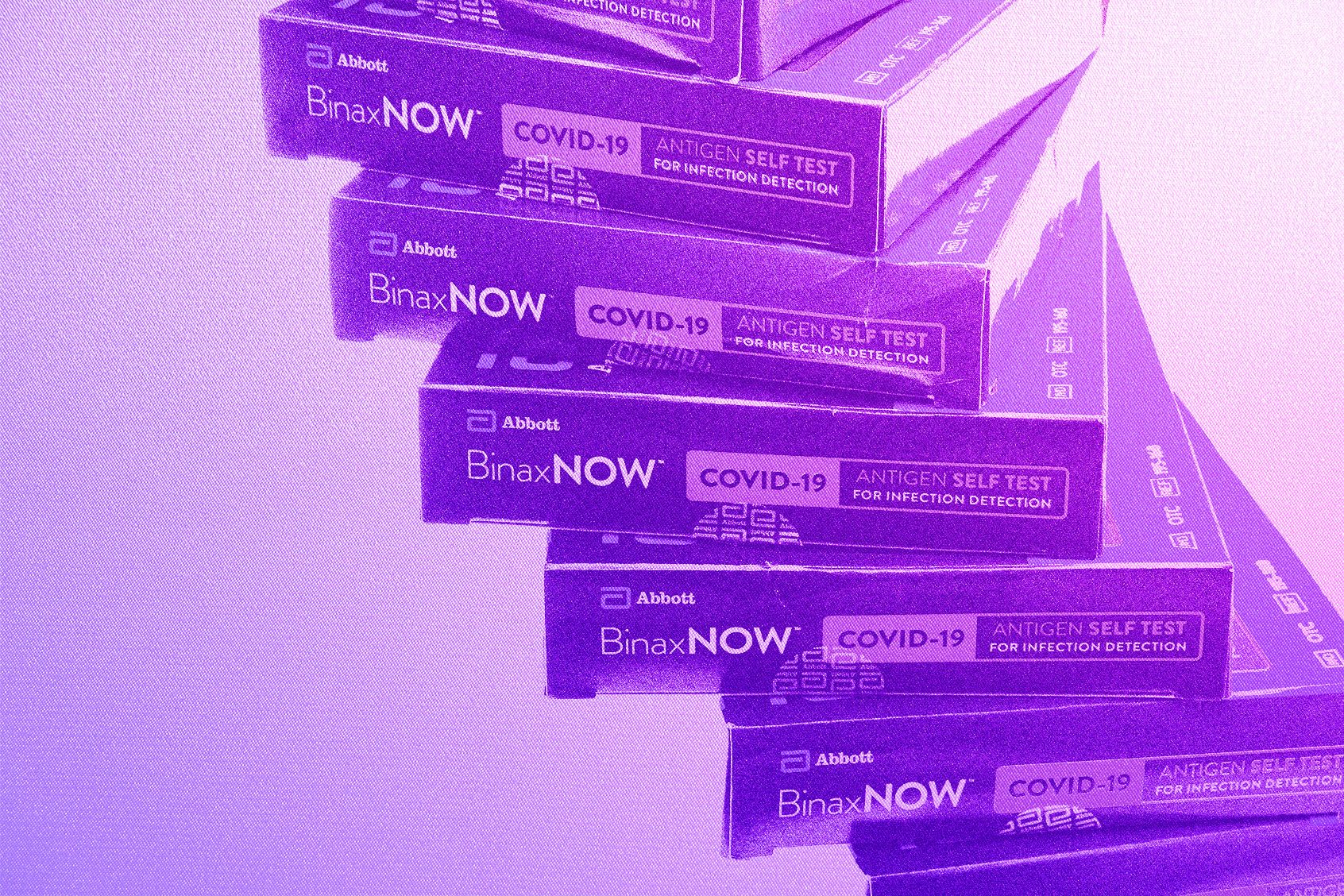Most of us have taken a COVID test at home. The uncomfortable nasal swab, the anxious waiting as the red lines bleed into either positive or negative. And then finally, the result. The whole process can leave many of us wondering if these little tests are actually accurate. Given their widespread use in lieu of more accurate tests doctors can order, take home COVID tests can play a big role in the pandemic, so their precision is critical.
Last summer, reports surfaced that many at-home COVID tests were yielding false negatives. Adding to a confusing time during the pandemic, experts warned that a negative at-home test didn’t necessarily mean that one was clear of the illness. Today, as daily COVID numbers have stopped being tracked, people are still getting infected — all while the state of at-home testing is murky. Now a new study published in the journal Microbiology Spectrum sheds light on just how accurate these tests are, and their limitations.
At-home tests function by detecting the presence of substances called antigens that stimulate an immune response against COVID. The presence of antigens is an indicator that a patient has the SARS-CoV-2 virus, which causes COVID. While it varies by brand, at-home tests generally work when a person swabs their own nostrils and then exposes the sample to a liquid chemical, which will then determine if they are positive or not by detecting the presence of the antigen being tested.
In the new study, researchers at California Institute of Technology tracked viral loads in three places of the human body — nose, throat and mouth — over the course of a COVID infection. While they expected to observe similar virus levels in the three locations, their results told a different story that started to raise complexities and questions around at-home tests. Specifically, that the virus appears in a person’s throat and saliva first, and then their nose.
Want more health and science stories in your inbox? Subscribe to Salon’s weekly newsletter The Vulgar Scientist.
“We wanted to ask the question: How well do the rapid antigen tests detect people who are infected, and how well the rapid antigen tests detect people who are not just infected, but actually infectious and capable of transmitting the virus to other people?” Alexander Viloria Winnett, biology graduate student and study co-author, told Salon. “There are a lot of studies out there with kind of conflicting results, likely because the population that is actually doing the test makes a big difference for how well the tests performed.”
The authors of the study found that when looking at the performance of the test cross-sectionally, at-home antigen tests are only 44 percent accurate.
“Then if we subsetted that to people who were infectious, meaning that they had high viral loads that are likely to be transmissible to other people, we found the performance was still fairly low — just above 60 percent,” Viloria Winnett said.
“There are a lot of studies out there with kind of conflicting results, likely because the population that is actually doing the test makes a big difference for how well the tests performed.”
At first, at-home tests were believed to be more accurate. Popular at-home tests BinaxNOW and QuickVue were estimated to have an accuracy in the range of 85 percent, meaning they missed about 15 out of 100 people who are infected. Due to the way they work, they were known to be effective at detecting an infection when a person has a high viral load, meaning the point of illness that someone is most likely to infect others, by testing the viral load in a person’s nose.
Reid Akana, co-author of the study, explained to Salon that one unique part of their study was that they measured the number of viral particles in various specimens, perhaps suggesting that the nose isn’t the best place to test, as most at-home antigen tests were designed and approved to do.
This doesn’t mean the accuracy of at-home tests has declined, but rather researchers are better able to understand their limitations.
“We wanted to measure the viral load in each of those three specimen [throat, nose and saliva] types, just to see if there’s any differences in the dynamics there or how they evolve over time, and this has quite large implications for nasal antigen testing,” Akana said. “What could feasibly happen is that someone could have a very low viral load in a nasal swab and not be detectable by the antigen tests, whereas they could have very high viral loads in saliva or throat or another specimen type — potentially infectious, viral loads.”
In that case, the antigen test wouldn’t detect the virus.
Viloria Winnett said this doesn’t mean that the accuracy of at-home tests has declined, but rather researchers are better able to understand their limitations. When asked what the future holds for at-home antigen tests, Akana said declaring them “useless” would be “a step too far in one direction.”
“I think that these sorts of tests do have their place, but it’s just really important to understand the caveats behind them,” he said. “That the limit of detection of these tests aren’t necessarily in line with the viral load necessary to be infectious, you can be infectious in other specimen types, but not the infectious and specimen type you’re actively testing.”
Read more
about COVID-19 tests

